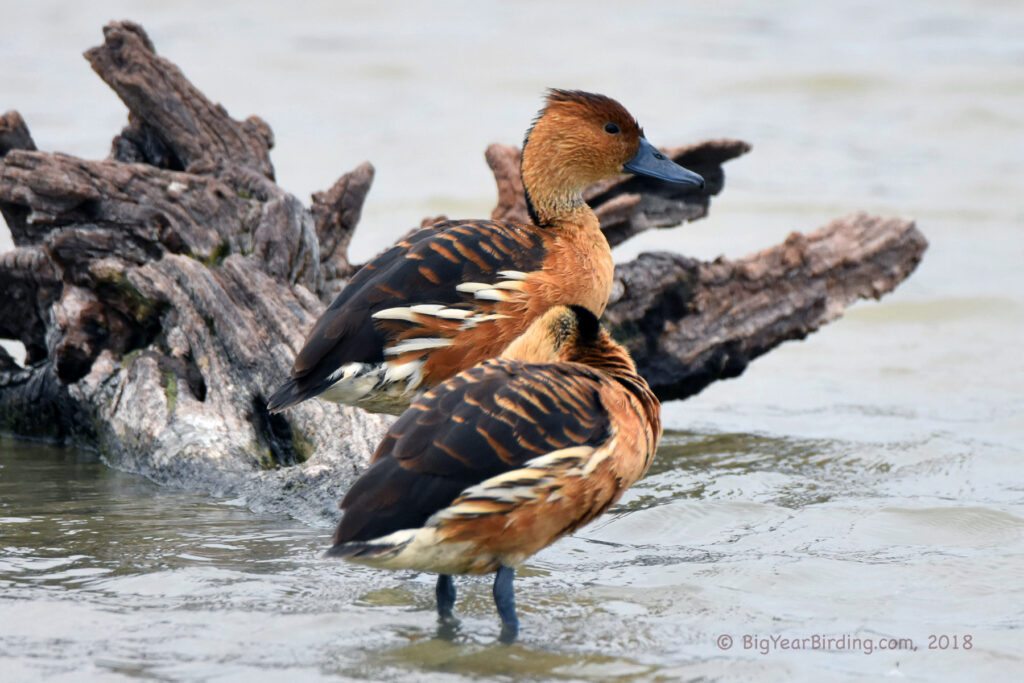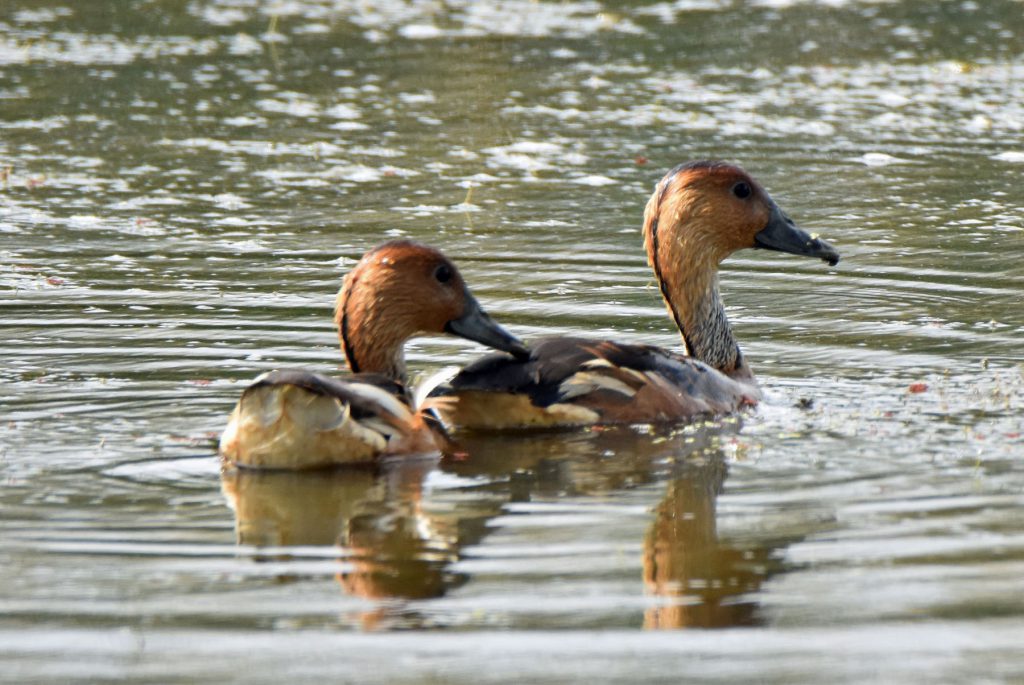
The Fulvous Whistling-Duck (Dendrocygna bicolor) is a unique bird species that is widely distributed across North, Central, and South America. This species of waterfowl is medium-sized, measuring between 18 and 22 inches in length and weighing between 1.5 and 2.5 pounds. Their distinguishing field marks include a long neck, distinctive rusty or chestnut-colored head, and a bright yellow or orange bill. Their plumage is mostly brown with pale buff undertail coverts and primaries.
Fulvous Whistling-Ducks are migratory birds that breed in the United States, Mexico, and Central America and spend their winters in South America. They typically migrate in large flocks and travel long distances, with some birds covering up to 4,000 miles during their annual migration. These birds prefer wetlands, swamps, marshes, and shallow ponds, and are known to feed on aquatic plants, insects, and crustaceans.

During the breeding season, Fulvous Whistling-Ducks are monogamous and form pairs that construct their nests in tree hollows, on the ground, or in shrubs. The female lays between 6 and 15 eggs, which both parents incubate for around 25-30 days. Once hatched, the ducklings are precocial and can swim and feed themselves shortly after hatching.
Although not considered threatened, Fulvous Whistling-Ducks face some conservation challenges. Habitat loss and degradation are significant threats to their populations, as they rely heavily on wetland habitats that are under threat from urbanization, agriculture, and water management practices. Hunting is another potential threat, as some populations of Fulvous Whistling-Ducks are harvested for their meat and eggs.
In conclusion, the Fulvous Whistling-Duck is a fascinating and unique bird species that is widely distributed across the Americas. Their long necks, chestnut-colored heads, and bright yellow bills make them easy to identify in the field, and their migratory behavior and reliance on wetland habitats make them an important indicator species for ecosystem health. While not considered threatened, habitat loss and hunting are potential threats that must be addressed to ensure the continued survival of this beautiful species.
